4 More FOSS Android Apps
25 March, 2025
Here’s another look at some FOSS apps for Android-powered smartphones, specifically four such apps I’ve installed which I find (or have found) useful.
While you can probably install most, if not all, of these apps from a certain tech giant’s app store, I’ll be pointing you to F-Droid instead.
Frigoligo
I don’t read on my phone all that much, at least compared to the amount I did read on that phone before 2020. There are a few reasons for that, ranging from the size of a phone’s screen to not always having my glasses handy.
When I do read on my phone, it’s mainly long-form articles. As you might recall from a previous post, I’ve returned to using wallabag as my read-it-later tool of choice. wallabag’s mobile app is OK, but I prefer using an app called Frigoligo for several reasons. Frigoligo has a more modern design, gives me more control over the fonts that I use, and it works a bit more smoothly than the wallabag app.
To use Frigoligo, you need an account with an instance of wallabag. That could be self hosted or one of the hosted versions. You’ll also need to do a bit of setup, which I describe in this post. Once you’ve done that, refresh Frigoligo and you’ll see something like this:
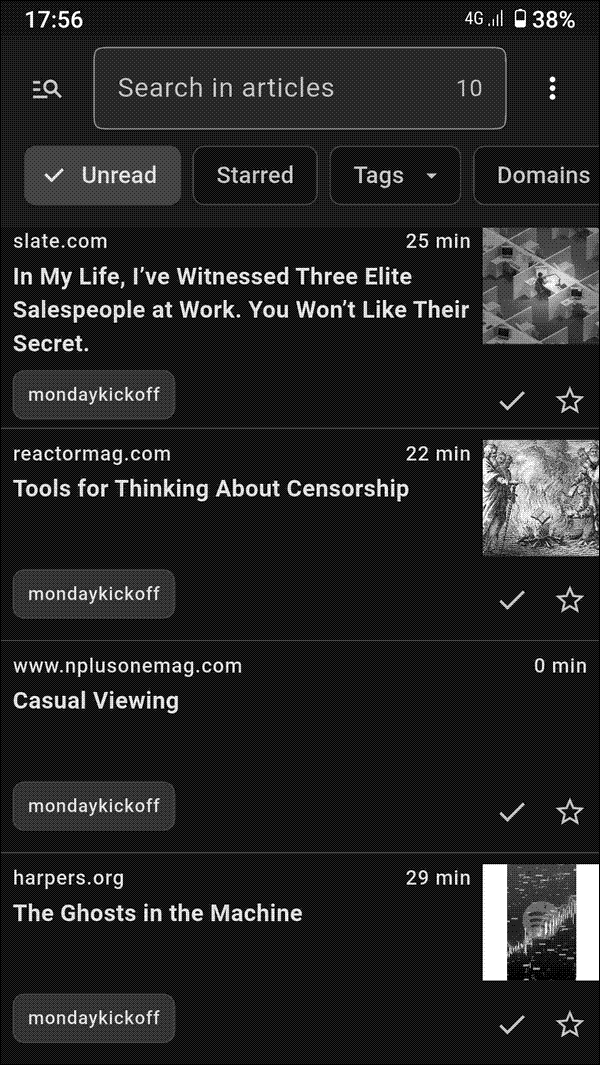
Tap an article to read it. Here’s what that looks like:
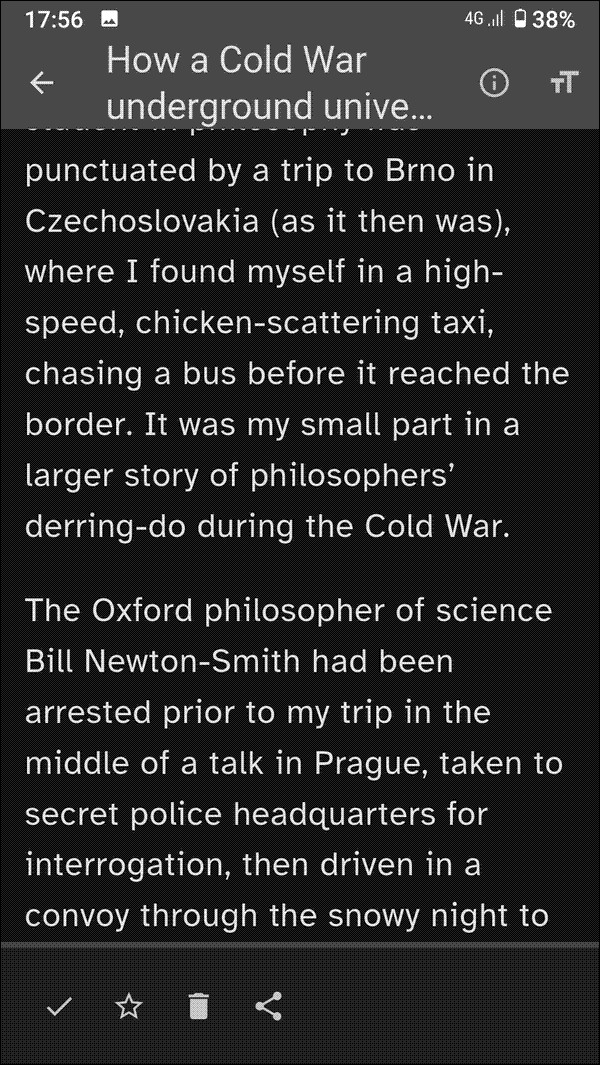
When you’re done, you can archive or delete the article, which does the same at wallabag’s end. Simple, but effective.
EVMap
While I drive an electric vehicle, I don’t suffer from range anxiety. I don’t (yet) have a home charger, but I know where the public chargers in my area are. When I’m driving long distances, though, that’s not always the case. Planning my route, and any charging stop I need to make, is easier with an app called EVMap.
As its name implies, EVMap points out where charging stations are in an area that you choose. You can zoom in from, say, city or country level to specific locations on a map, like in the example below.
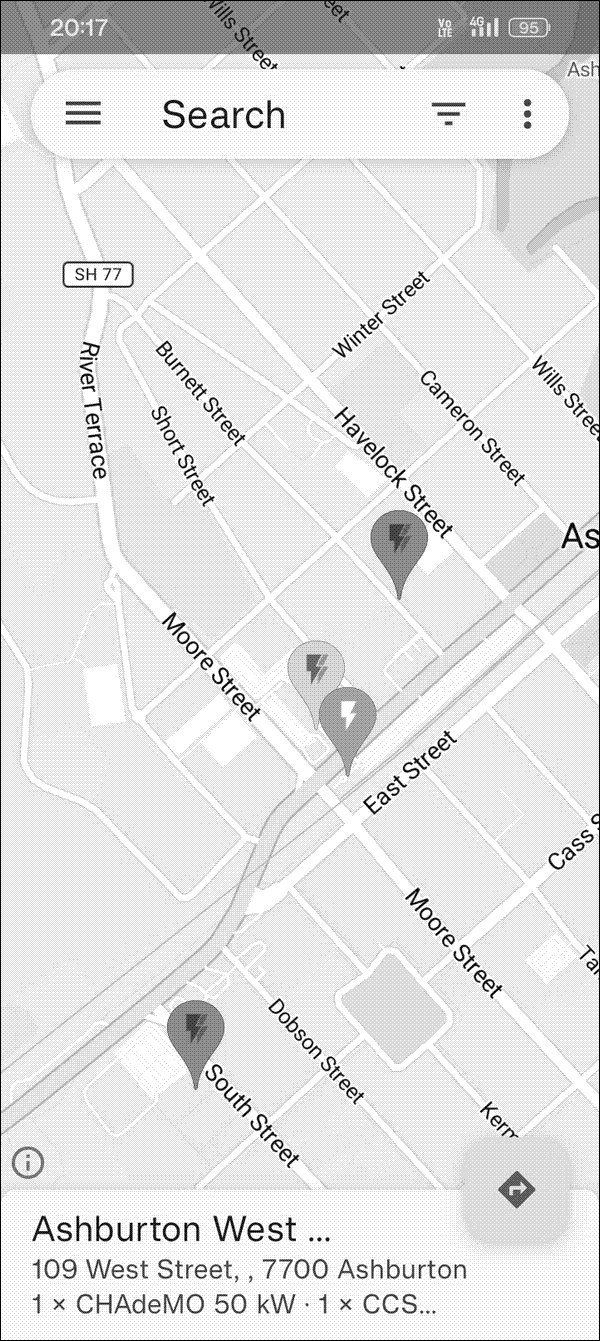
Tap a location and you get some information about the charger there — for example, the address, the number and types of chargers, and even one or more photos. Here’s an example:
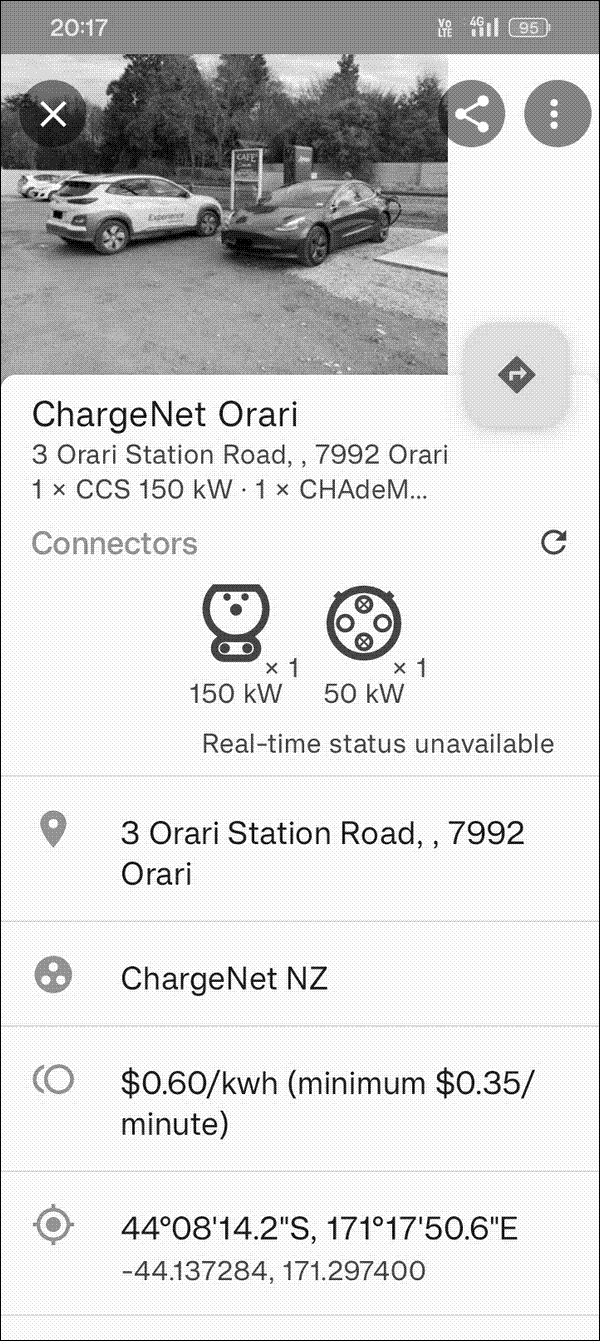
You can apply and save filters that let you customize what you see on a map, like:
- The types of chargers.
- Chargers that are part of specific charging networks.
- Chargers of at least a minimum capacity that you set.
- Whether to show locations that have chargers with faults.
And more. You can also bookmark the chargers that you use most often. Best of all, the app can display on my car’s infotainment screen so I (or, at least, my human copilot) can check it. Here’s what that looks like:
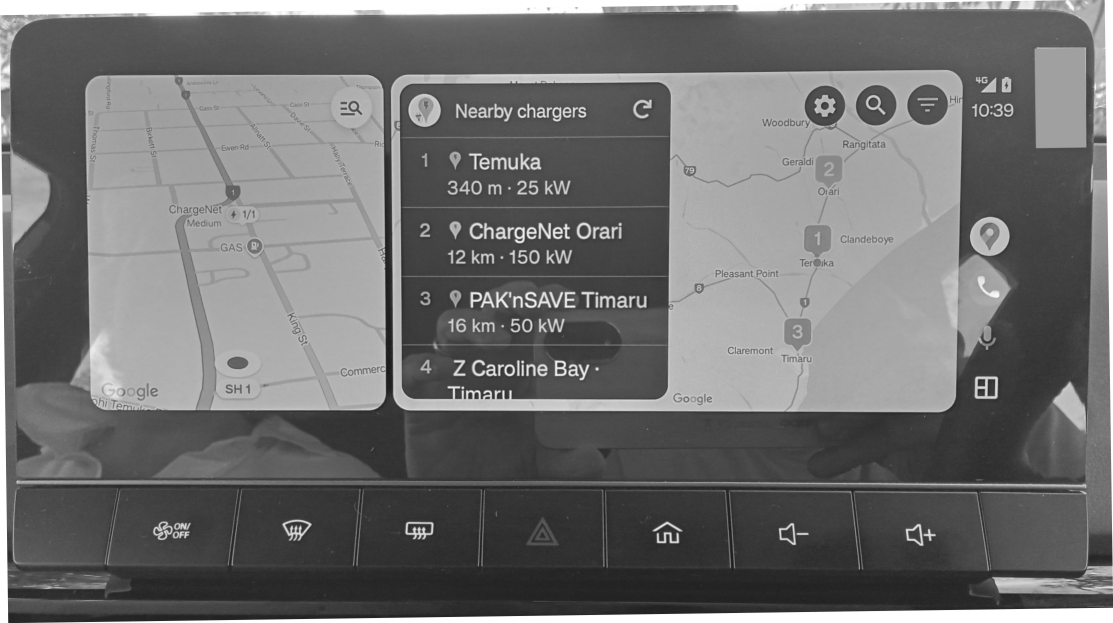
The only real drawback of EVMap (if you want to call it a drawback) is that it uses a service called Open Charge Map, which isn’t always up to date. You can, however, sign up for a free Open Charge Map account and add or edit charging locations.
Phocid
When I’m out and about, I listen to music to both keep myself from getting bored and to block out the noise around me. Auxio is my Android music player of choice, but that doesn’t stop me from occasionally trying out others. Of the music players I’ve test driven recently, one that has the potential to replace Auxio on my phone is Phocid.
One of the reasons for that is Phocid has a very clean interface, as you can see:
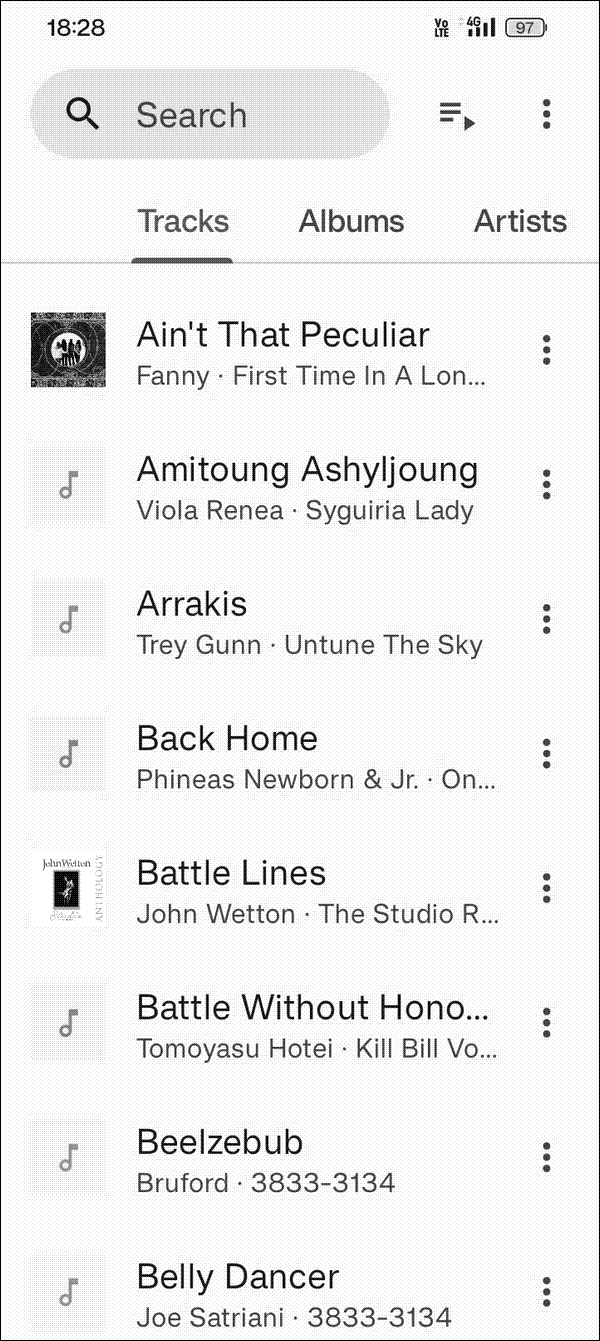
And here it is playing a song:

Phocid works smoothly and quickly, which is surprising considering how many features it packs. Those features include:
- Creating an editing playlists.
- Sorting by album, artist, track, genre, and playlist.
- Displaying album artwork and lyrics (or not).
- Changing various playback settings.
- Modifying the app’s theme.
And a bit more. All in all, Phocid’s a nice little music player.
PDF Wallet
Back when the COVID-19 pandemic hit, I (like most people) needed a vaccine certificate for certain purposes. The government’s website, from which I downloaded said pass, suggested using Google’s or Apple’s mobile wallet app to store the document. I wasn’t comfortable with those options. Instead, I turned to PDF Wallet (known, at the time, as Green Pass PDF Wallet).
The app isn’t just for vaccine certificates. You can use it to securely store and display (when needed) documents like certificates, tickets, bills, contracts, cards, or anything with a barcode or QR code that you can scan.
To use PDF Wallet, tap Add in the app, select a PDF file on your phone, and you’re done. The PDFs display either as a set of scrolling images or, as shown below, in a list.
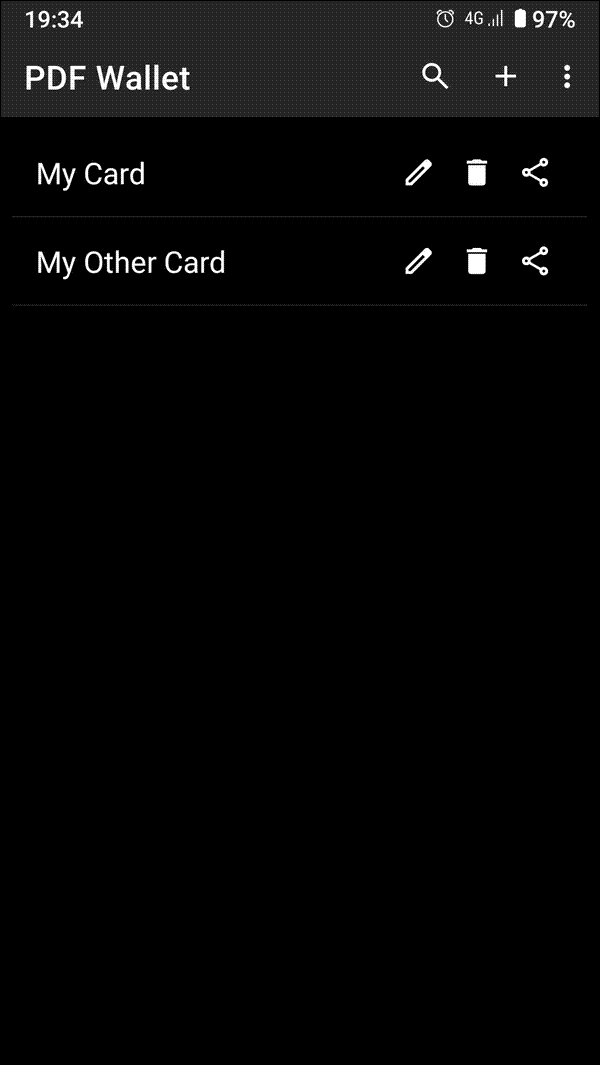
PDF Wallet has a few options, which you can see here:
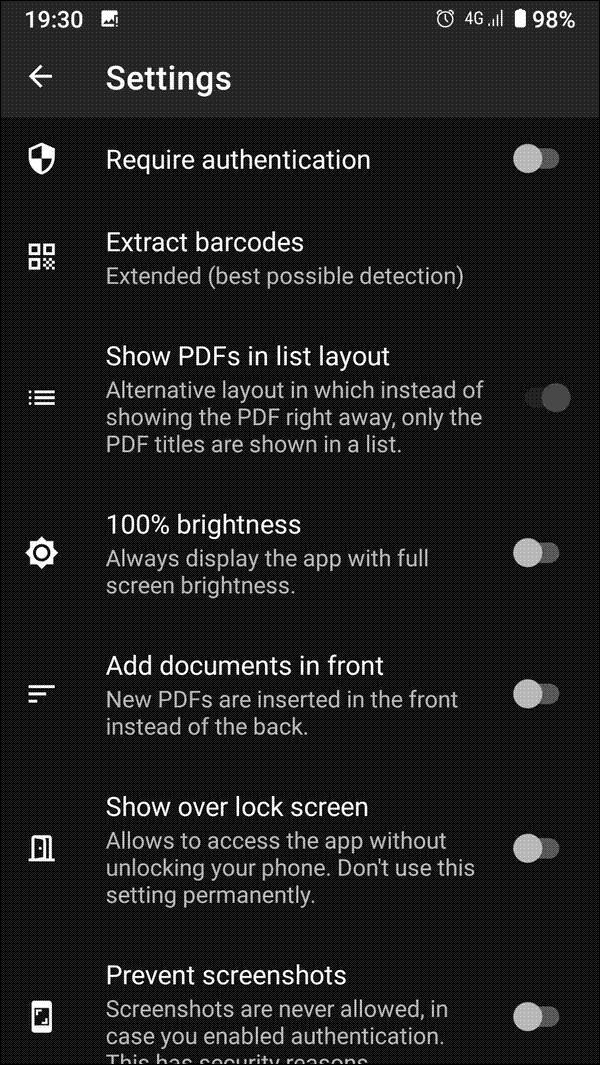
The most useful of these (besides the one to display your PDFs as a list) are:
- Use your phone’s passcode to unlock the app.
- Use the app from your phone’s lock screen.
- Display your PDFs at maximum brightness always. This helps barcode scanners better detect them.
PDF Wallet doesn’t have all that many features, but it is quick and simple which is perfect for my needs.